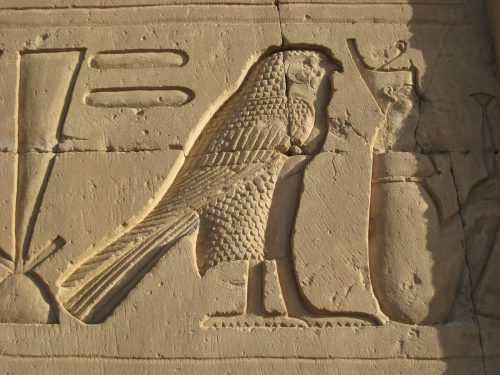"Dear Father Spitzer, the Jesus myth is almost entirely lifted from Horus, the Egyptian God of the sun.
Born of a virgin on Dec. 25, had 12 disciples, healed the blind, raised a man from the dead, crucified, rose again three days later, and was. . . savior. . . all thousands of years before the New Testament (and a larger part of the Old, as I recall) was written.
Although I have never doubted that a man named Jesus existed and taught, calling him the messiah seems extremely pretentious."
—Brad (as commented on the Magis Center Facebook page)
Dear Brad,
Thank you for your question.
I think you will eventually want to answer it in a much larger context taking into consideration some of the outstanding scholarly works of historical exegesis concerning Jesus Christ (see below).
These works address the historical questions that have been raised by scholars who have extensive knowledge of the Semitic world and literature at the time of Jesus.
I can give you a brief answer to your specific question.
To be quite frank, the history of Jesus of Nazareth is not derived from the myth of Horus.
 CC BY-SA 2.0 by Karen Green / via Wikimedia Commons
CC BY-SA 2.0 by Karen Green / via Wikimedia Commons
The Horus Myth
As you know, Horus is said to be the god of the sky (and, therefore, contains the sun and the moon).
His divine origin is from Isis, who is said to have been impregnated in various ways. However, she was by no means a virgin.
Horus did not have a single incarnation (e.g., born on December 25 of a virgin), but rather multiple incarnations in all of the pharaohs. Horus, in fact, is thought to be the source of Pharaonic power. When one Pharaoh died, Horus assumed a new incarnation for the next Pharaoh, and the deceased Pharaoh assumed the presence of Osiris.
To be honest with you, the differences between Horus and Jesus are so vast that it does not seem reasonable to believe that a “Jesus myth” could have been developed from it.
A Few False Claims Within the Horus Myth Compared to the Story of Jesus
Above, I stated that Horus was not born from a virgin—as Jesus was—but it is also claimed that his birth was announced by an angel and a star and that shepherds visited the cave in which he was born. All aspects, except the location, are eerily similar to the story of Christ's birth. However, there is actually no reference to a cave or shepherds in the Horus myth. Furthermore, it is not stated anywhere that the birth was heralded by an angel or announced via a star.
Another claim, similar to the story of Jesus, is that Horus had twelve disciples. However, this claim can be deemed false as there is no consistent recollection of Horus's number of followers. Some accounts say that Horus had only four followers (called "Shemsu Heru"). Other accounts say that at some point in Horus's life, he had sixteen followers. Furthermore, there is even a group that consists of an undetermined amount of followers. Jesus, on the other hand, did have exactly twelve disciples—which can be historically proven.
Horus is also claimed to have performed miracles. Which would of course be present in the retellings of the myth; he was deemed a "god"! However, there is no mention, nor proof, that Horus ever walked on water, raised people from the dead, or exercised demons. Also, through the use of history, we can prove the miracles of Jesus.
Just like Jesus, it is claimed that Horus was crucified between two thieves. He is even said to have been buried for three days and was resurrected! However, Horus is not reported to have died in most retellings of the myth. Commonly, he is said to merge Re (the Sun God) and is reborn as the sun rises every day. In contrast, the use of historicity proves Jesus's resurrection.
Moving Beyond the Egyptian Horus Myth: Verified Facts About Jesus
As noted above, a vast literature of serious historical scholarship about Jesus exists.
I would like to recommend two series that are both recent and rigorously peer-reviewed.
First is a five-volume series by John P. Meier entitled A Marginal Jew.
The first volume addresses the historical apparatus and methodology used not only in Meier’s volumes but also in the vast literature of serious historical Jesus research that has been done in the last 100 years—particularly in the last 40 years.
The other three volumes specifically address questions surrounding Jesus’ ministry, death, and resurrection.
Meier uses several well-known historical techniques to ascertain the most primitive strands of the New Testament narratives and then applies historical criticism to them to derive the most probable historical conclusions.
Each volume is about 800 pages of extensive research with hundreds of footnotes and outstanding scholarly journals.
I also recommend the three-volume series of N.T. Wright, particularly the second volume, Jesus and the Victory of God, and the third volume, The Resurrection of the Son of God.
Though these titles indicate conclusions, Wright has used a rigorous exegetical and historical method to come to those conclusions, and his work is again heavily supported by hundreds of footnotes in outstanding scholarly journals.
Again, thank you so much for your question. I hope this is helpful.
*Originally published on August 31, 2020.

